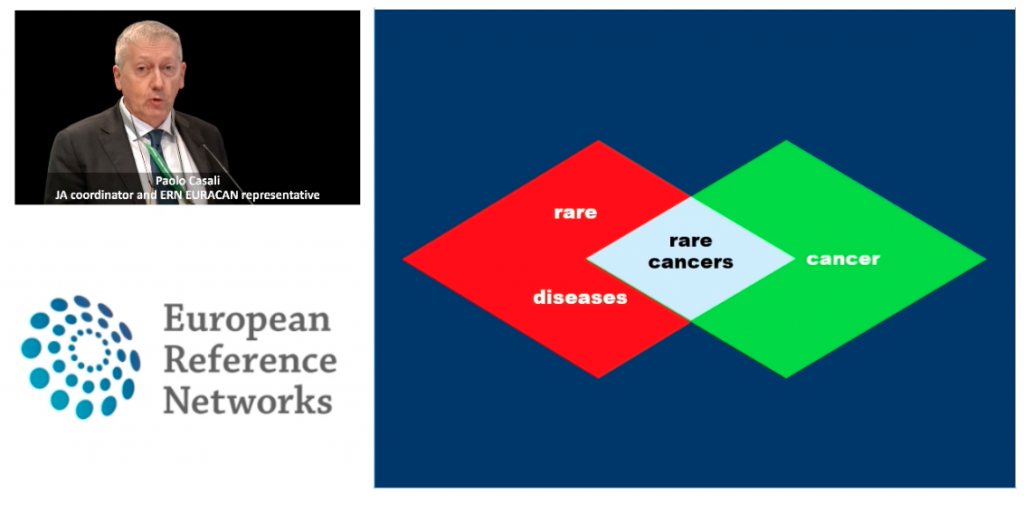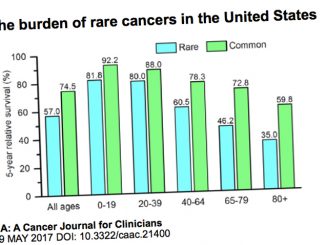Rare cancers were among the topics discussed last month at the 3rd conference on European Reference Networks held in Vilnius, in Lithuania, where Dr Paolo Casali, from the Milan’s Istituto Nazionale dei Tumori illustrated the goals of the Joint Action on Rare Cancers (JARC), that was launched to integrate and maximize efforts of the European Union (EU) Commission, EU Member States and all stakeholders to advance quality of care and research on rare cancers (see video of his presentation here).
 Casali, who is the coordinator of the Joint Action, explained that its goals are to help all stakeholders to work together to further two main goals: prioritise rare cancers, in the agenda of the EU and Member States, with a view to national cancer plans and quality of healthcare, harmonization of clinical practice, innovation through promotion of clinical and translational research; and develop innovative and shared solutions, mainly to be implemented through the future European Reference Networks (ERNs) on rare cancers, in the areas of quality of care, research, education and state of the art definition on prevention, diagnosis and treatment of rare cancers.
Casali, who is the coordinator of the Joint Action, explained that its goals are to help all stakeholders to work together to further two main goals: prioritise rare cancers, in the agenda of the EU and Member States, with a view to national cancer plans and quality of healthcare, harmonization of clinical practice, innovation through promotion of clinical and translational research; and develop innovative and shared solutions, mainly to be implemented through the future European Reference Networks (ERNs) on rare cancers, in the areas of quality of care, research, education and state of the art definition on prevention, diagnosis and treatment of rare cancers.
In order to reach these goals, six specific objectives were identified: the improvenment of the epidemiological surveillance of rare cancers in the EU; the identification of standards of care for all families of rare cancers to ensure sharing of best practices and equality of care for rare cancers accross Europe, particularly through clinical networking; a better implementation at local level and within ERNs of clinical practice guidelines on rare cancers; the integration of translational research innovations into rare cancer care; more education on rare cancers for medical and non medical experts to ameliorate management of rare cancers and to improve rare cancer patients’ empowerment in the EU, and last but not least the identification of core strategies to incorporate in National cancer plans and Rare disease plans to address the specific needs of rare cancers accross EU member States.
The 12 families of rare cancers
Rare cancers include 198 different types of cancer, and 24% of new diagnoses of cancers. Patients tipically struggle with late or incorrect diagnosis, lack of access to appropriate therapies and clinical expertise, lack of scientific studies due to the small number of patients, lack of interest in developing new therapies due to limitations in the market, few available registries (clinical registries mostly) and tissue banks. For the purposes of JARC, the following “families” of rare cancers will be singled out, following the “Surveillance of rare cancers” (RARECARE – www.rarecare.eu) list:
- Head and neck cancers (cancers of nasal cavity and sinuses, nasopharynx, hypopharynx, larynx, salivery grands, oropharynx, oral cavity and lip, eye, middle ear)
- Thoracic rare cancers (tumours of trachea, thymus, malignant mesothelioma)
- Male genital and urogenital rare cancers (tumours of testis, penis, renal pelvis, ureter, urethra and extragonodal germ cell tumours)
- Female genital rare cancers (tumours of vulva and vagina, non epithlial tumours of ovary, trophoblastic tumours of the placenta)
- Neuroendocrine tumours
- Tumours of he endocrine organs (cancers of thyroid, parathyroid, adrenal cortex, pituitary gland)
- Central Nervous System tumours (Glial tumours, medulloblastoma, malignant meningioma)
- Sarcomas (sort tissue sarcomas, bone sarcomas, gastrointestinal stromal tumours)
- Digestive rare cancers (Tumours of small intestine, anal canal, gallbladder and extrahepatic biliary duct)
- Rare skin cancers and non-cutaneous melanoma (melanoma of mucosae and of the uvea, adnexal skin carcinomas, Kaposi sarcoma)
- Haematological rare malignancies (acute myeloid leukemia, myeloproliferative neoplasms, myelodisplastic and myeloproliferative neoplasms, histiocytic and dendritic cell neoplasms)
- Pediatric cancers (all).
The Joint action just made available the poster and the brochure illustrating the initiative.





